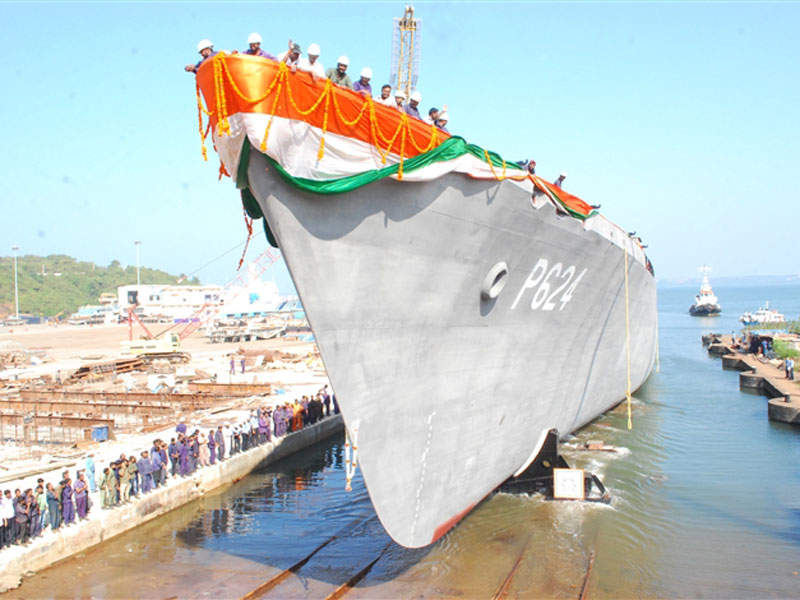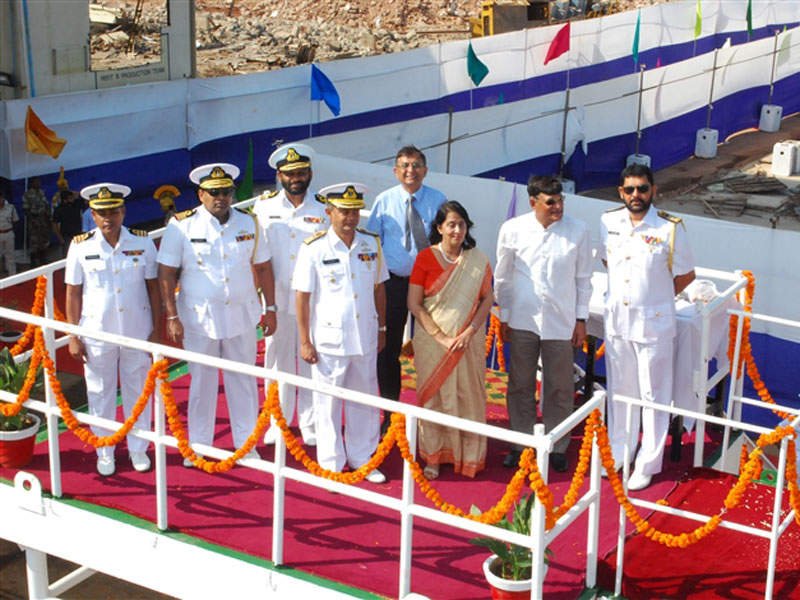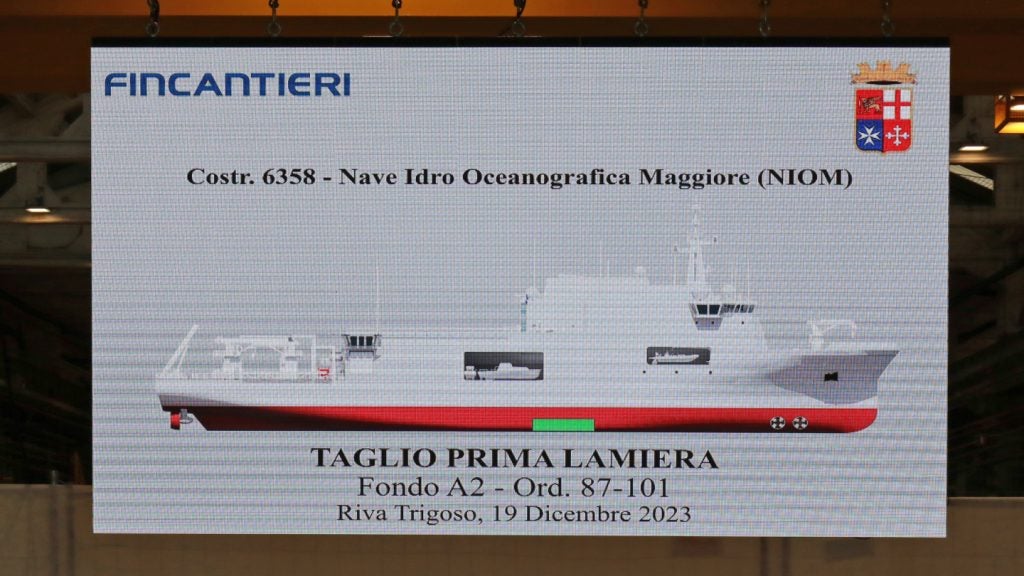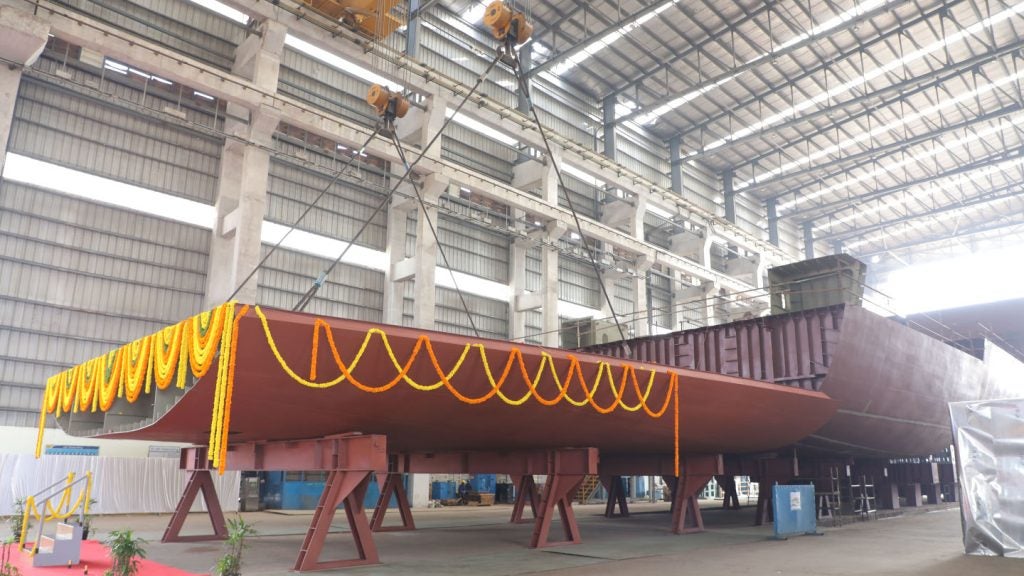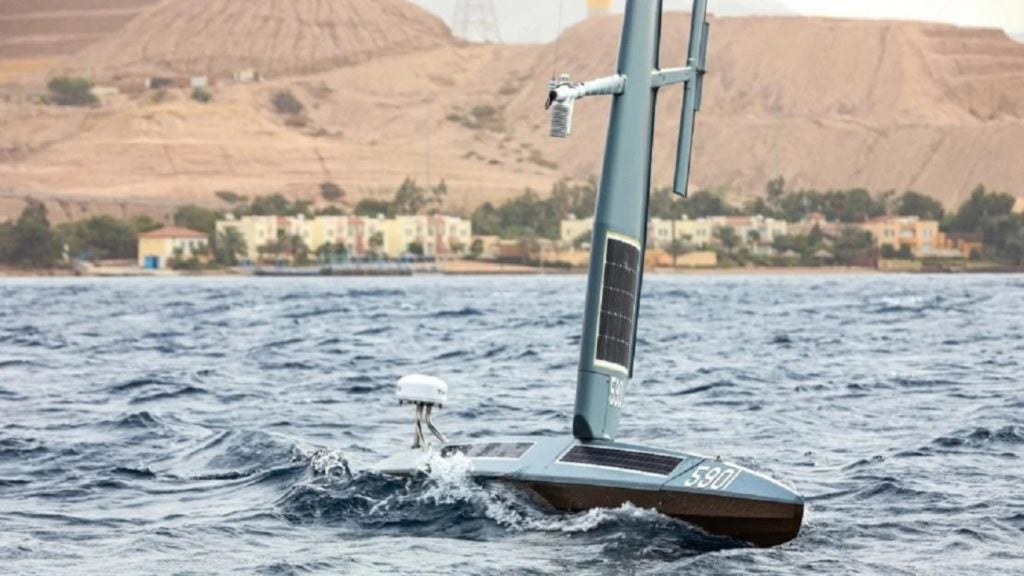Indian shipbuilding company Goa Shipyard built two 105m advanced offshore patrol vessels (AOPV) for the mission requirements of the Sri Lankan Navy. The vessels are based on Samarth-class OPVs, which are operational with the Indian Coast Guard.
The new AOPVs can conduct patrols, policing, search and rescue, surveillance and pollution control missions in Sri Lanka’s maritime zones. They can also be used for external fire-fighting missions.
The keel-laying ceremony of the first 105m advanced offshore patrol vessel was held in September 2014 and the ceremonial launching took place in June 2016.
The Sri Lankan Navy took the delivery of the first vessel in August 2017, followed by the second vessel in March 2018.
105m advanced offshore patrol vessel design
Built to the standards of Indian Register of Shipping (IRS) and the American Bureau of Shipping (ABS), the 105m advanced offshore patrol vessel features a steel hull.
The vessel has an overall length of 105m, a width of 13.6m and a moulded depth of 6m. Its propeller and mean draughts are 4.5m and 3.6m respectively. With a displacement of 2,350t, the OPV can carry 391t of fuel oil, 130t of freshwater, 10t of lube oil and 16.5t of AVCAT fuel.
The vessel is manned by 14 crew members and accommodates 98 sailors.
Features of the offshore patrol vessel for the Sri Lankan Navy
The advanced offshore patrol vessel has a landing facility and hangar for an advanced light helicopter (ALH). It also features a Helo traversing gear and Helo landing gear to allow helicopters to land on the vessel.
The deck is outfitted with two 1,440kg-high holding power anchors with chain and two electro-hydraulic cranes for handling 6.5m rigid-hulled inflatable boat, two anchor capstans and one mooring capstan. The vessel is also equipped with two 40k rigid inflatable boats (RIBs), two quick response RIBs and an inflatable boat.
The boat is equipped with two fire-fighting systems with a capacity of 1,400m³/h at 140MWC each for external fire-fighting operations.
The vessel features auxiliary systems, including oily bilge water separator and vacuum toilet system.
105m AOPV armament
The 105m AOPV is armed with one 30mm 2A42 CRN-91 automatic gun and two 12.5mm SRCGs controlled by a fire control system. Equipped with a double-belt separate gun feed, the weapon can fire single shots at a rate of 200-300 rounds a minute.
The gun is hinged with BPK-2-42 active / passive sight with day and night modes for target identification and surveillance and determining target range. It is suitable for mounting 76mm super rapid gn mounts (SRGMs) and can support the installation of large calibre weapons.
Surveillance and communication
The Sri Lankan Navy’s 105m advanced offshore patrol vessels are equipped with a wide range of surveillance and communication equipment, including echo sounder, speed log, a differential global positioning system (DGPS), magnetic compass, gyrocompass and radar with automatic radar plotting aids (ARPA).
The vessels carry communication systems built to the Global Maritime Distress and Safety System (GMDSS) A3 requirements for increased maritime safety.
The on-board autopilot and electronic chart display and information systems allow for efficient operation at sea.
Propulsion system
The propulsion system of the 105m advanced offshore patrol vessel includes two 20-cylinder PA6B STC engines with a power rating of 7,792kW each, reduction gearbox and two controllable pitch propellers.
Power for the equipment onboard the vessel is generated by four 450kW, 415V three-phase, 50Hz generators.
105m patrol vessels performance
The 105m advanced offshore patrol vessel can sail at a maximum speed of 25k and can stay afloat for approximately 20 days. It is designed to operate up to a range of 6,500nm at a speed of 12k.

